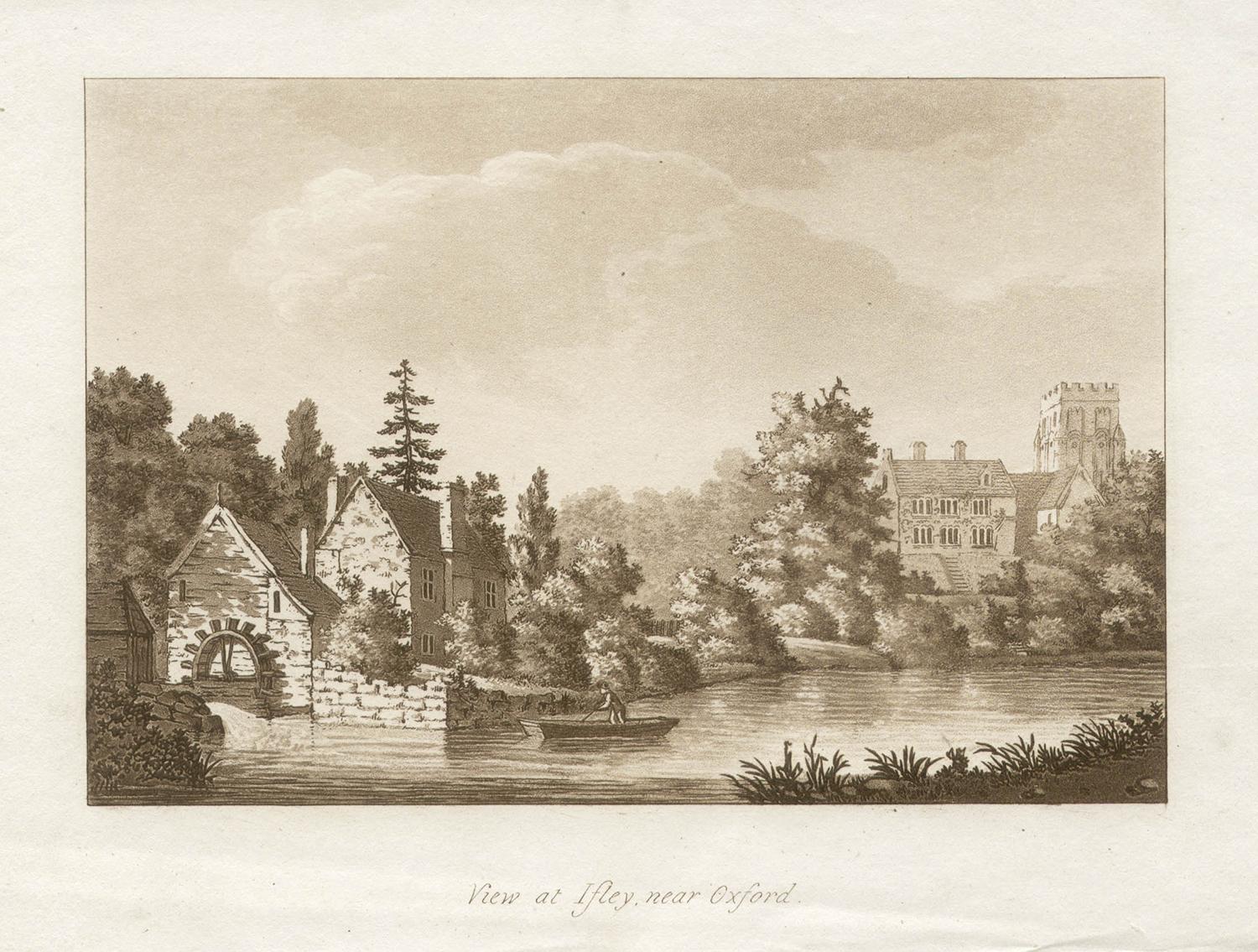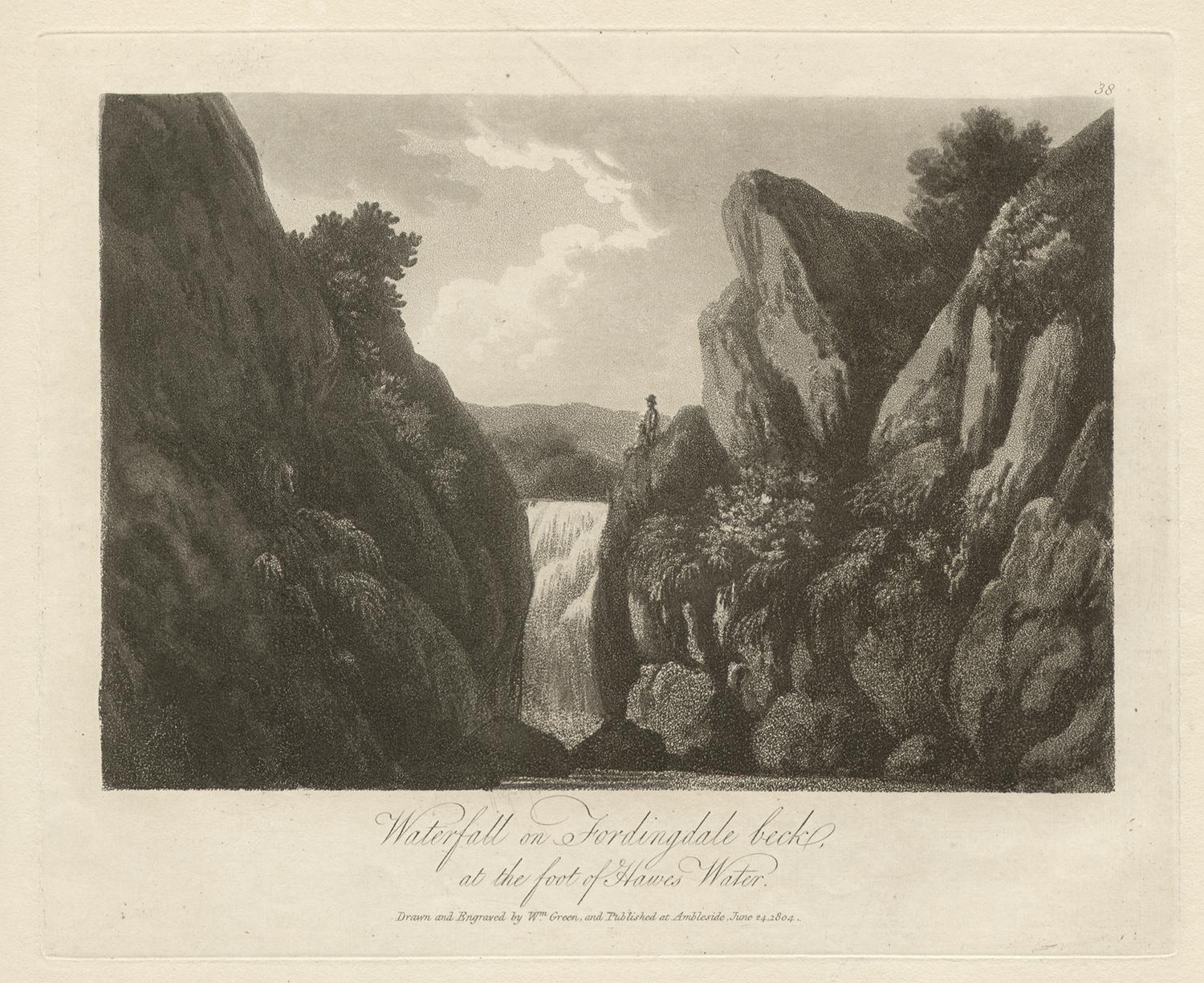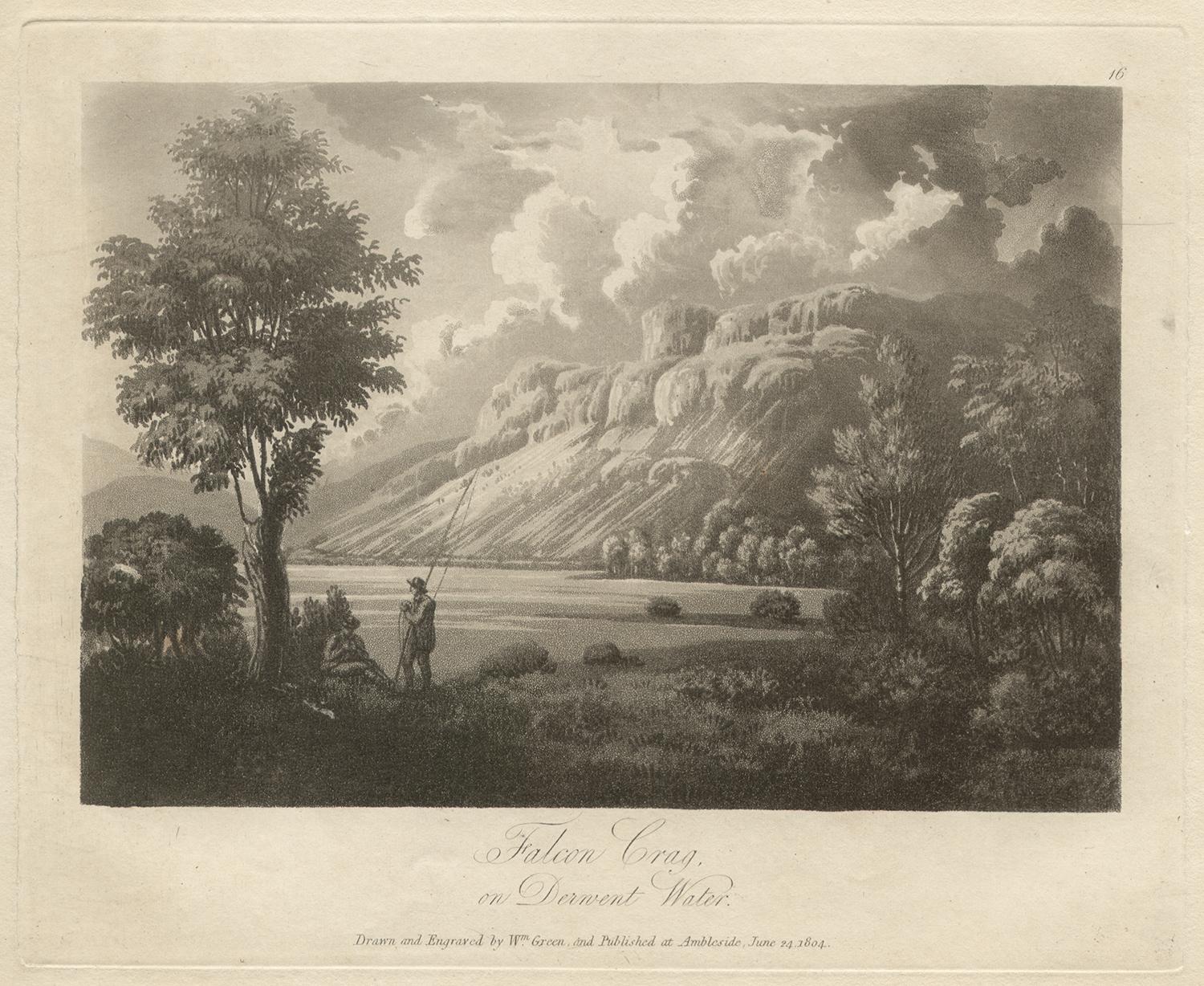Items Similar to Brother Water, Lake District scenery C19th English aquatint
Want more images or videos?
Request additional images or videos from the seller
1 of 3
William GreenBrother Water, Lake District scenery C19th English aquatint1804
1804
About the Item
'Brother Water descending from Kirkstone'
Aquatint by William Green, 1804
William Green of Ambleside was a Lake District draughtsman, soft ground etcher and aquatint engraver of landscapes and topographical views mainly to his own designs. Green was permanently resident in the Lake District from about 1800, working from his home in Ambleside and a studio in Keswick. He died in April 1823 and was buried at Grasmere. His friend Wordsworth wrote his epitaph.
180mm by 225mm (platemark)
- Creator:William Green (1760 - 1823, English)
- Creation Year:1804
- Dimensions:Height: 7.09 in (18 cm)Width: 8.86 in (22.5 cm)
- Medium:
- Movement & Style:
- Period:
- Condition:Faint handling crease on the right and side.
- Gallery Location:Melbourne, AU
- Reference Number:1stDibs: LU124428609012
About the Seller
5.0
Platinum Seller
These expertly vetted sellers are 1stDibs' most experienced sellers and are rated highest by our customers.
Established in 2005
1stDibs seller since 2019
443 sales on 1stDibs
Typical response time: 1 hour
- ShippingRetrieving quote...Ships From: Melbourne, Australia
- Return PolicyA return for this item may be initiated within 14 days of delivery.
More From This SellerView All
- View at Ifley, near Oxford, late 18th century English sepia aquatint, 1799Located in Melbourne, Victoria'View at Ifley, near Oxford' Aquatint published by Samuel Ireland. From his 'Picturesque Views on the River Thames'. Ireland was an author and engraver who published several series ...Category
Late 18th Century Naturalistic Landscape Prints
MaterialsEngraving, Etching, Aquatint
- Falcon Crag, Lake District scenery C19th English aquatintLocated in Melbourne, Victoria'Falcon Crag' Aquatint by William Green, 1804 William Green of Ambleside was a Lake District draughtsman, soft ground etcher and aquatint engraver of ...Category
Early 19th Century Naturalistic Landscape Prints
MaterialsEngraving, Aquatint
- Bassenthwaite Water, from the Western Side, Lake District C19th English aquatintLocated in Melbourne, Victoria'Bassenthwaite Water, from the Western Side' Aquatint by William Green, 1804 William Green of Ambleside was a Lake District draughtsman, soft ground e...Category
Early 19th Century Naturalistic Landscape Prints
MaterialsEngraving, Aquatint
- Waterfall on Fordingdale beck, Lake District scenery C19th English aquatintLocated in Melbourne, Victoria'Waterfall on Fordingdale beck, at the foot of Hawes Water' Aquatint by William Green, 1804 William Green of Ambleside was a Lake District draughtsman...Category
Early 19th Century Naturalistic Landscape Prints
MaterialsEngraving, Aquatint
- West Side of the Chapel of St Paul, Westminster Abbey, architecture aquatintBy John Bluck (active 1791-1819) after Frederick Mackenzie (1788-1854)Located in Melbourne, VictoriaColour aquatint by John Bluck (active 1791-1819) after Frederick Mackenzie (1788-1854). Architectural interior with superb original colour. From 'Westminster Abbey', published by Ru...Category
Early 19th Century Naturalistic Landscape Prints
MaterialsEngraving, Etching, Aquatint
- West View of St Nicholas Chapel, Westminster Abbey, architecture aquatintLocated in Melbourne, VictoriaColour aquatint by John Bluck (active 1791-1819) after Auguste Pugin (1762-1832). Architectural interior with superb original colour. From 'Westminster Abbey', published by Rudolf A...Category
Early 19th Century Naturalistic Landscape Prints
MaterialsEngraving, Etching, Aquatint
You May Also Like
- Views of London: A Pair of Framed 19th Century Engravings by Havell and AllomLocated in Alamo, CAThis is a pair of framed hand-colored prints, both utilizing engraving and etching techniques, depicting two London architectural landmarks: "The National Gallery, Charing Cross" and "Covent Garden Market" from the Stationers' Almanac, published in London by J. Robins & Sons in the early 19th century. Both of these prints show vibrant London street scenes with markets, carriages, common people as well as the wealthy in the foreground of "Covent Garden Market" and wealthy well dressed people, carriages, a begger, street merchants, as well as uniformed military on horseback in the foreground of "The National Gallery". "The National Gallery, Charing Cross" was created by James Sands from a painting by Thomas Allom (1804-1872), published in 1836. "Covent Garden Market" was created by Frederick James Havell (1801–1840/41) after a painting by William Havell...Category
Mid-19th Century Naturalistic Landscape Prints
MaterialsEtching, Engraving
- Orchids" Framed 19th C. Hand-Colored Engraving of "Lycaste Harrisoniae" by FitchBy John Nugent FitchLocated in Alamo, CAThis beautiful, original hand-colored orchid lithograph entitled "Lycaste Harrisoniae Eburnea" Orchids by John Nugent Fitch is plate 100 in Robert Warner's publication 'The Orchid Al...Category
1880s Naturalistic Still-life Prints
MaterialsEngraving
- Group of Four Mezzotint Hunting Plates.By Johann Elias RidingerLocated in London, GB4 mezzotint engravings by and after Ridinger (c.55 x 43 cm.) with margins on all sides. [Published: Augsburg, 1750]. A fine group showing 2 male and 2 female hunters along with the ...Category
1750s Naturalistic Landscape Prints
MaterialsHandmade Paper, Engraving, Mezzotint
- New Revised North America Map with Mythical Figures and AnimalsLocated in Houston, TXCopperplate engraving hand colored map of Northern America. The figures of the mythical figure along the right side and the animals were added in later after the original printing. T...Category
Early 1700s Naturalistic Landscape Prints
MaterialsEngraving
- "Coastal Ti Tree" Gums NSW Drypoint Etching in Ink on Paper No. 30/100Located in Soquel, CA"Coastal Ti Tree" Drypoint Etching in Ink on Paper No. 30/100 Detailed etching attributed to Ernest Edwin Abbot (British, 1888-1973). Several trees grow along the coast at the edge of the water at Ti Tree, Australia. In the far distance, a mountain range can be seen on the opposite shore. Titled and numbered "Coastal Ti Tree 30-100" in the left corner. Signed "G. Cope" in the right corner. Presented in a new black mat with foamcore backing. Mat size: 11"H x 14"W Paper size: 5.5"H x 10.25"W According to The Centre for Australian Art: Prints + Printmaking, Abbot often produced work under the pseudonym "G. Cope" Ernest Edwin Abbott was born in 1889 and grew up in Bideford United Kingdom, With his younger siblings Violet, Reginald, Olive and his parents Charles and Sarah Abbott, His Farther worked as a upholsterer. Abbott decided in 1911 to migrate to Western Australia on the ship Tainui, Settled in Western Australia he then married his wife Florence Radcliffe Olde in 1913 whom also came to Australia in 1912 from Bideford. They had two sons, Reginald Douglas Abbott and Kenneth John Abbott. They moved to South Australia where he taught art at Stott’s for four years. Later in 1920 the family moved to the suburb of Kew in Melbourne Victoria, where he took a studio in Oxford Chambers at 475 Bourke Street. He also built a studio later at his home in Black Rock. In about 1920 or 1930 he took up dry-point etching, and gave up his city studio to concentrate on printmaking at his home. Abbott made his own engraving tools...Category
Early 20th Century Naturalistic Landscape Prints
MaterialsPaper, Ink, Drypoint
- An Antique Engraved View of "Romelborg", Sweden in the 17th C. by Erik DahlbergBy Erik DahlbergLocated in Alamo, CAAn antique engraved view of "Romelborg", Sweden in 1705 from "Sueciae Antiquae et Hodiernae"' published in Stockholm by Erik Dahlberg (1625-1703). The engraving was created by Johan...Category
Early 18th Century Naturalistic Landscape Prints
MaterialsLaid Paper, Engraving
Recently Viewed
View AllMore Ways To Browse
Antique Green
Green English
Georges Lambert On Sale
Dionisio Moretti On Sale
Lilian Miller
Klimt The Swamp
Paolo Boni
Martin Lewis White Monday
Martin Levine On Sale
Marion Osborn Cunningham On Sale
Luigi Lucioni On Sale
Staub Vintage
Roi Partridge Etchings
Picasso Plate Pomme
Sarah Fosse
Tiffany And Co Dallas Tx
Veduta Di Venezia
18 Th Century Furniture For Sale





